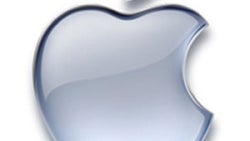Sideloading apps to the iPhone and iPad is now (sort of) possible with Xcode 7

One of the main advantages that Android has historically held over iOS is sideloading, the ability to load apps from external sources. As it turns out, Apple quietly introduced a similar feature with Xcode 7 - the IDE that developers use to write apps for iOS and Mac OS - although it will not work as smoothly as on Android.
The recently-unveiled Xcode 7, currently available in beta, allows developers to test their apps on physical iPhone and iPads without having to join the Apple Developer program and pay the $99 yearly fee. What this means is that anyone can download open source code, build the app, and then load in on their iPhone or iPad without having to go through the App Store. Obviously, Apple doesn't refer to the feature as sideloading.
In theory, since the user can now install apps that are not available in the App Store, this is almost the same thing as sideloading. The downside is that users cannot simply download pre-packaged apps and load them on the iPhone or iPad, as Android users can. Instead, to achieve this, iOS users have to download the source code of the app, load it in a new Xcode 7 project, build it, then send it to the iPhone or iPad. To find out exactly how to do this, check out the source link below.
Sideloading apps that Apple doesn't accept in the App Store is a major reason why jailbreaking is very popular. Unfortunately, the newfound ability to test code on the iPhone and iPad is not the problem solver that it might appear to be. Even if users can get their hands on open source code and build the apps they need themselves, the problem is that an un-jailbroken iPhone and iPad still imposes limitations on the apps that it runs through sandboxing. Even if users can now bypass the App Store, sideloaded apps still have to obey by iOS rules. On the upside, there are app types that Apple doesn't allow on the App Store, but that could be sideloaded, such as emulators.
Another downside is that Xcode is only available as a Mac OS X app. Windows users have to virtualize an installation of Mac OS X on their Windows machine before running Xcode, which can be a bit difficult for novice users.
source: Bouke van der Bijl via 9to5Mac













Things that are NOT allowed: